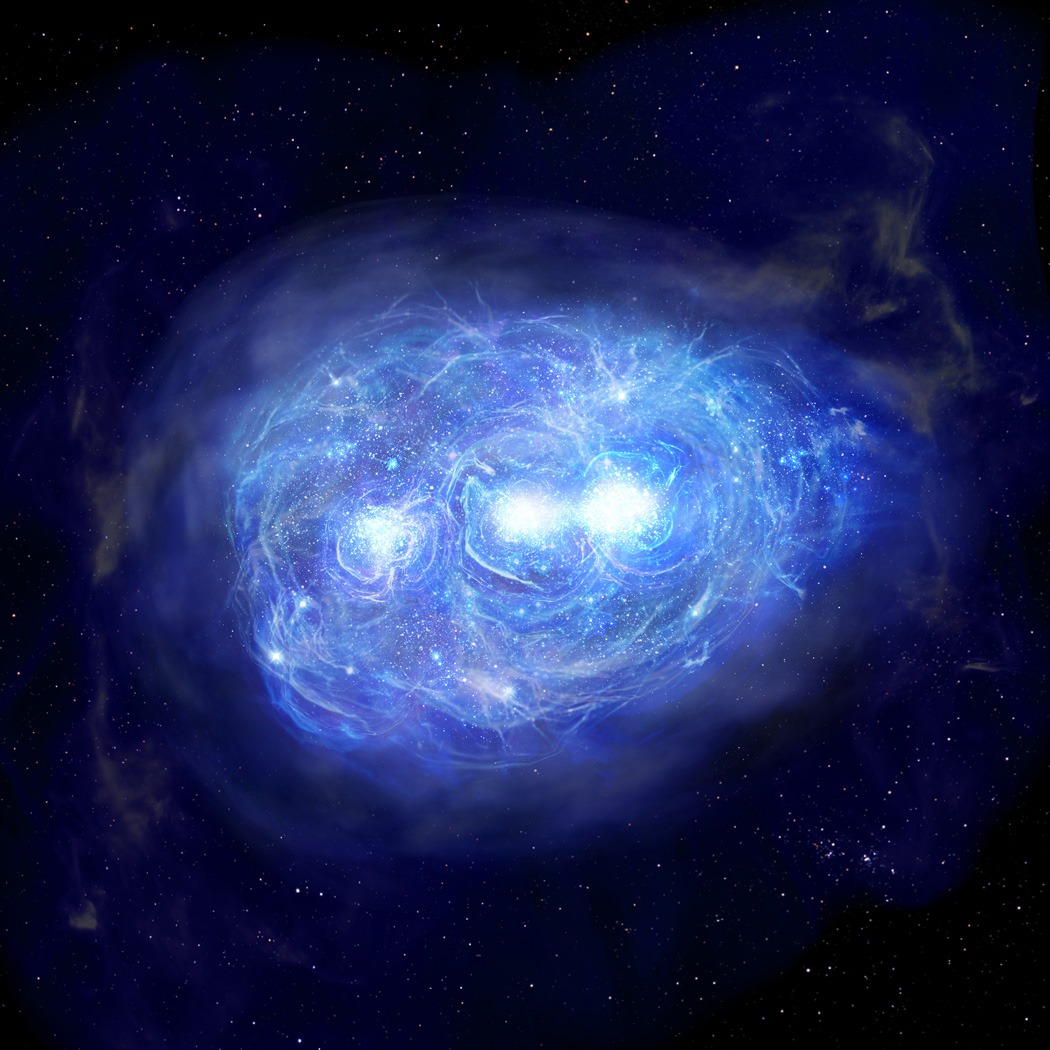In 2009, a team of Japanese researchers reported that a newly discovered primordial blob could be the most enormous object yet identified in the early universe. The gas cloud, which was discovered from a distance of 12.9 billion light-years, could indicate the early phases of galaxy formation when the universe was only 800 million years old.
This blob of gas was one of the most exciting objects discovered by Japanese scientists in Subaru Telescope’s wide-field survey. It was later on called Himiko, a “space blob” named after a legendary queen from ancient Japan.
Himiko is a massive galaxy with a 55,000-light-year-long hot incandescent gaseous halo. Himiko is not only massive, but also extremely distant, having been discovered around 800 million years after the Big Bang, when the universe was only 6% of its current size and stars and galaxies were barely forming. It is so old that elements like carbon are almost non-existent from its elements. There has been no data found regarding the elements it consists, of other than hydrogen and helium.
Current data show that there are no signs of carbon gas which is the index of star formation. Additionally, it does not show any signs of radiation from dust clouds, and the carbon emission is 30 times weaker as compared to the present day stars and galaxies. Its composition is similar to an early galaxy called Lyman Alpha Blobs (LABs). The LABs are the gigantic concentrations of gas and are known to be one of the largest objects in the universe.
When these LABs come close by, though, our planet’s own protective barrier filters them out, making them difficult to observe. Our astronomers, however, are fortunate to have technologies able to create a direct observation. However, Himiko is not in the immediate vicinity. Cetus is a constellation in the northern sky where Himiko is situated. It took 12.9 billion years for it to reach Earth. This suggests that Himiko was born 800 million years after the Big Bang, when our universe was born. This time period is known as the Reionization Epoch.
The epoch of reionization is the time when the first stars and galaxies appeared in the universe. It happened between 200 million and one billion years after the Big Bang. This data, according to the Atacama Large Millimimeter Array (ALMA) telescope, indicates that this huge blob is 6 percent of its current age. Himiko is thought to have 40 billion solar masses which explains why Himiko is 10 times larger than any other galaxy discovered after the Big Bang. Furthermore, Himiko’s stars are classified as first-generation stars.
Since Himiko is billions of lightyears away, scientists believe its light has been redshifted. The space itself showed signs of redshift. As the universe expanded, the light it produced shifted from short-wavelength ultraviolet to long-wavelength infrared. Scientists are able to examine and analyze Himiko from Earth because of this. Himiko is an ionized gas cloud that envelops a black hole. Furthermore, according to Simbad, Himiko’s radial velocity is 289575 kilometers per second (km/s), which is the speed at which the object is travelling away or towards the Sun. Himiko’s angle of orientation is 90 degrees. Its delineation is at -05 08 44.898, and the nearest major star from this huge blob is 67 Ceti.
Himiko has made a significant contribution to our understanding of how galaxies form in the early universe. Traditionally, smaller clouds merge repeatedly, eventually producing a larger galaxy. Himiko, on the other hand, was discovered and existed at a very early period in the evolution of the cosmos. This giant blob was already half the size of the Milky Way and ten times more massive than any other galaxy known at the time. The astronomers who were studying Himiko’s behavior were greatly perplexed by this.
Astronomers concluded that if anything gigantic like Himiko could have formed at the beginning of the universe, contemporary galactic formations and galaxies should be far larger—-if they aren’t, we are missing something as to why the universe evolves. Aside from that, another oddity about this blob is that it is brighter than astronomers thought. The formation of an unusually large number of stars triggered this occurrence. It also revealed crucial details regarding the “Cosmic Dawn” phase of galaxy formation, which took place 250 million to 350 million years after the universe was born. The researchers calculated the age of galaxies ranging from 200 to 300 million years, estimating when the first stars formed.
In 2013, a group of international astronomers took a closer look at this amazing blob. Using the latest technologies of the Hubble Space Telescope and Atacama Large Millimeter Away (ALMA) observatory in New Mexico, a new discovery was made. Himiko is not just one large cluster of gas, as everyone thought. It contains three clusters of merging clouds, and each cluster was the size of objects found right after the Big Bang happened.
Himiko was generated by an unusual collision of young galaxies, which supports the astronomer’s theory about the early cosmos. Another riddle has been answered as a result of these three galaxies merging. The collision of these gas clouds causes massive amounts of gas to collide, resulting in rapid star formation. Himiko was once a tremendous mystery, but with enough information, the riddle was solved. This discovery is crucial because it demonstrates that incredible things can happen in the universe.
Blobs like Himiko cloud can teach us a lot about galaxy formation and even early cosmos occurrences. However, the origins of LABs and what causes them to glow remain a mystery. Studying these blobs teaches us a lot about space, galaxies, and the universe’s soon-to-be-solved mysteries.

